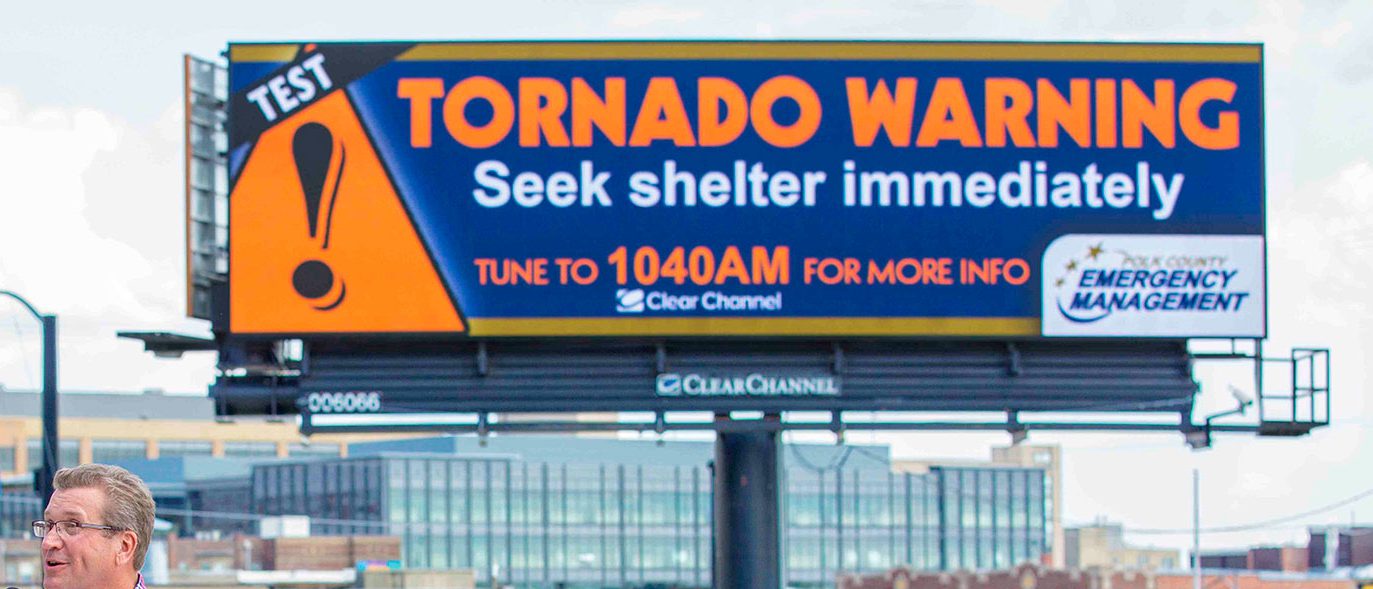
The nation’s highway safety agency recently featured a digital billboard on the cover of its newsletter, heralding winners of its contest to design safe-driving messages on billboards (Project Yellow Light).
Yes, digital billboards have become a communications platform for the sake of safety (safe driving and overall safety of communities).
Accepted, regulated, and safe, digital billboards have been deployed for nearly two decades. We thought it would be instructive — and historically interesting — to chart the history of digital billboards and traffic safety.
Industry as Research Pioneer
In 2007, Virginia Tech published an industry-sponsored study based on driver behavior that said digital billboards were safety neutral.
The industry went further, tasking outside experts to analyze accident records in five different markets. Reams of data showed that digital billboards did not have a statistical relationship with accidents.
Healthy skepticism greets most industry-sponsored research. The Federal Highway Administration (FHWA) launched its own study, enlisting the respected global engineering firm SAIC (Science Applications International Corporation) to help analyze drivers’ eye glances.
Using the latest equipment to monitor eye movements, the federal study (released in late 2013) concluded that glances in the direction of digital billboards were well under the distraction threshold set earlier via comprehensive federal research.
What Do the Feds Say about Safety?
A citizen from Georgia asked federal authorities about digital billboards and safety. Here’s the response she received:
From: Lori Millen <[email protected]>
Date: Wednesday, November 23, 2016 at 2:41 PM
To: “[email protected]” <[email protected]>
Subject: Johns Creek Billboards
Dear Ms. Murphy:
Thank you for sharing your concerns about the Stop the Texts. Stop the Wrecks. digital billboards in Johns Creek, GA. Your emails to TSM, Susan McMeen, and NHTSA’s Region 4 office were forwarded to me for a response.
Please be advised that the US Department of Transportation’s Federal Highway Administration (FHWA) contracted the Science Applications International Corporation (SAIC) to study the effects of digital billboards on driver attention and distraction in 2007. This study, which was based on how long drivers took their eyes off the road when in the presence of digital billboards, was conducted to determine if digital billboards posed an unsafe driver distraction. The study was completed in early 2010, and a draft report was subjected to peer review in 2012.
On December 30, 2013, FHWA released its final report that included the following findings:
- The presence of digital billboards does not appear to be related to a decrease in looking toward the road ahead, which is consistent with earlier industry-sponsored field research studies done by the Virginia Technical Transportation Institute (VTTI).
- The longest fixation to a digital billboard was 1.34 seconds, and to a standard billboard, it was 1.28 seconds, both of which are well below the accepted standard.
The results of this study are consistent with a wealth of research that has been conducted on vision in natural environments. In the driving environment, gaze allocation is principally controlled by the requirements of the task. The present data suggest that the drivers in this study directed the majority of their visual attention to areas of the roadway that were relevant to the task at hand (i.e., the driving task). Furthermore, it is possible, and likely, that in the time that the drivers looked away from the forward roadway, they may have elected to glance at other objects in the surrounding environment (in the absence of billboards) that were not relevant to the driving task. When billboards were present, the drivers in this study sometimes looked at them, but not such that overall attention to the forward roadway decreased.
FHWA has authority over issues relating to outdoor signage. If you have any additional questions or concerns, I would encourage you to contact Melissa Corder at [email protected]. She can provide you with more detailed information about the FHWA studies.
I hope this information has been helpful to you, and thank you for your interest in highway safety.
Sincerely,
Lori Gabrielle Millen, Marketing Specialist
U.S. Department of Transportation/NHTSA
1200 New Jersey Avenue, S.E. W52-234
Washington, D.C. 20590
Government Relies on Digital Billboards for Safety
In April, the FBI gave a director’s award to Clear Channel-Las Vegas for helping law enforcement after the mass shooting. For more than a decade, the FBI and other law enforcement have used digital billboards to empower the public on behalf of safety.
In 2010, pro-Transportation Secretary Ray LaHood launched high-visibility enforcement projects in two test markets to reduce distracted driving (Hartford and Syracuse). After four waves of intense enforcement and public education, including public service messages on digital billboards in Hartford, results were significant.
In Hartford, drivers using hand-held cell phones while driving dropped 57 percent, and texting while driving declined 72 percent, according to NHTSA’s report in 2017.
Last month, the City of Albuquerque (NM) enacted a program to display real-time emergency alerts on 44 digital billboards across the region. Similar partnerships have been enacted by other cities and several states.
The government’s top emergency manager described digital billboards like this: “Use of digital signage along highways is part of the layering and unity of messaging to reach affected communities, and supplements radio and mobile alerts,” said William B. “Brock” Long, administrator of the Federal Emergency Management Agency (FEMA).
Those who operate digital billboards are proud of their safety record, and their ability to advance public safety.
Published: July 3, 2018
